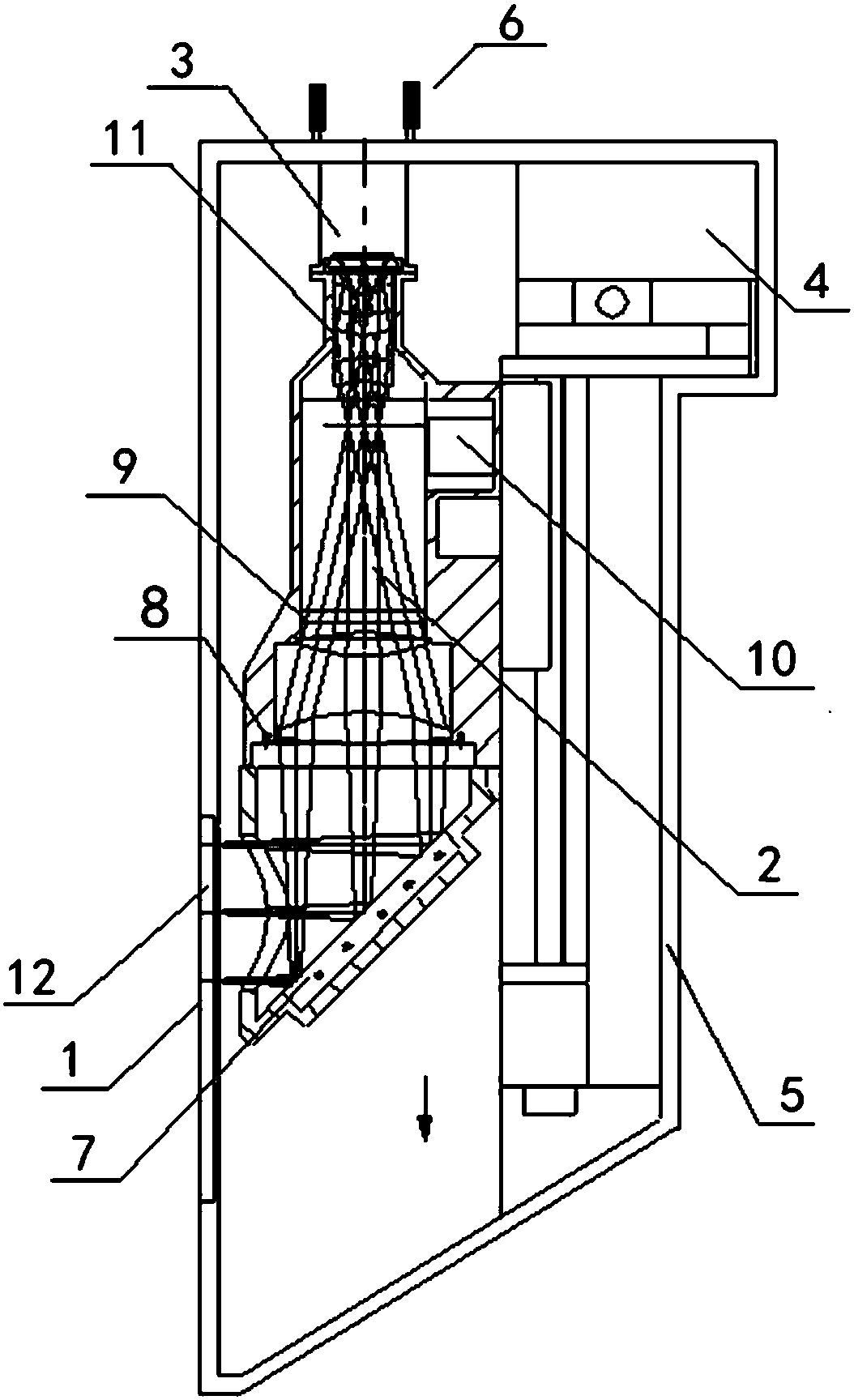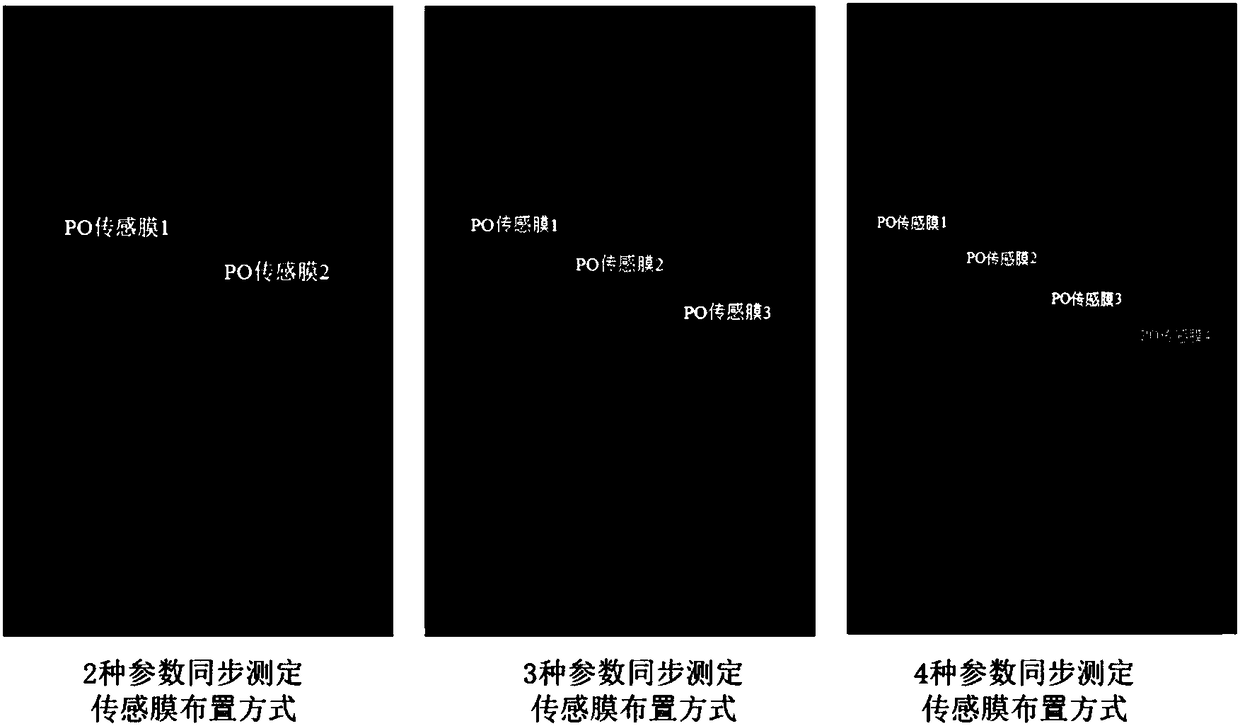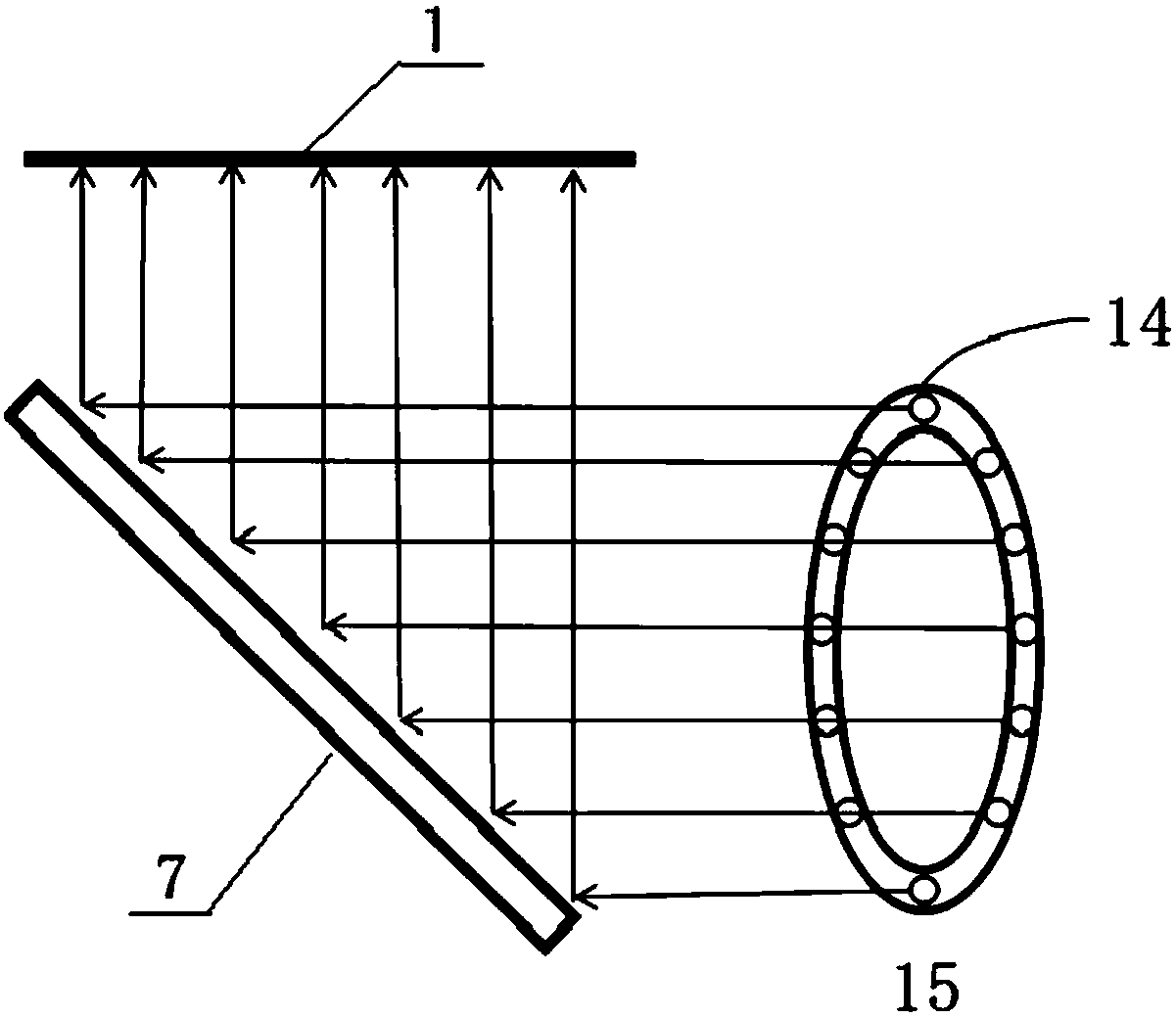In-situ synchronous monitoring method of wet land soil
A soil and wetland technology, applied in measurement devices, instruments, fluorescence/phosphorescence, etc., can solve the problems of volume-constrained planar optode technology on-site application, difficult to achieve multi-parameter synchronous monitoring, etc., to achieve short response time, convenient monitoring, space high resolution effect
- Summary
- Abstract
- Description
- Claims
- Application Information
AI Technical Summary
Problems solved by technology
Method used
Image
Examples
Embodiment 1
[0036] The in-situ synchronous monitoring method of wetland soil of the present invention is based on planar optode technology (PO) to realize synchronous in-situ monitoring of multiple parameters of water bodies or sediments, and the device used includes a fluorescent sensing film, an optical conduction unit, and a CMOS image sensor , two-dimensional translation guide rail, light-tight casing, power supply and data acquisition module; one or several fluorescent sensing films are installed outside the transparent window mirror of the light-tight casing, and the optical transmission unit and the CMOS image sensor form a linkage The whole is set on the two-dimensional translation guide rail. The optical conduction unit of the device, on the optical path from the fluorescent sensing film unit to the CMOS image sensor, sequentially includes a plane mirror, an LED light source, an optical lens group and a motorized rotary filter. Under the uniform illumination of the excitation lig...
Embodiment 2
[0052]The method of Example 1 was used to monitor the sediment pH and its two-dimensional distribution. The PO sensing membrane used to detect pH is based on the modified fluorescent dye of 8-hydroxypyrene-1,3,6-trisulfonic acid trisodium salt (HPTS-TOA) and the reference dye Fluorescent Yellow 10GN (MFY ) fluorescent sensing film, the film size is 4cm×2cm; the excitation light wavelength is 380nm to 420nm, and the optical filter is a 560nm single-wavelength optical filter.
[0053] 1) Preparation of PO sensing membrane: mix 100mg HPTS with 1g phosphorus pentachloride (PCl 5 ) contact reaction at room temperature for 1 hour to make it sulfonylated. Then react the obtained HPTS-sulfonyl chloride compound with 30 μL allylamine at 0°C to obtain a HPTS compound with cross-linked carbon-carbon double bonds, and finally react the compound with 4% polyvinyl alcohol glue, using polyethylene The adhesiveness of alcohol fixes the flat PET substrate and HPTS molecules to make a sensing...
Embodiment 3
[0071] The method of Example 1 was used to monitor the two-dimensional distribution information of pH and dissolved oxygen (DO) of the lake bottom sediment in the Meiliang Bay area of Taihu Lake on site. In the described device, the PO sensing membrane used to detect pH is based on modified 8-hydroxypyrene-1,3,6-trisodium sulfonic acid (HPTS-TOA) fluorescent dye, and cooperates with reference Fluorescent yellow 10GN (MFY) fluorescent sensing membrane with a membrane size of 4cm×2cm; the PO sensing membrane used to detect DO uses dual fluorophores, namely platinum octaethylporphyrin (PtOEP) fluorescent dye and reference dye MFY, the membrane size is 4cm x 2cm.
[0072] The PO sensing film used for detecting pH and the PO sensing film used for detecting DO are attached side by side on the window lens outside the device. After the PO film was fixed for 10 minutes, the device was slowly lifted vertically into the lake until the window mirror part of the device was inserted into...
PUM
 Login to View More
Login to View More Abstract
Description
Claims
Application Information
 Login to View More
Login to View More - R&D
- Intellectual Property
- Life Sciences
- Materials
- Tech Scout
- Unparalleled Data Quality
- Higher Quality Content
- 60% Fewer Hallucinations
Browse by: Latest US Patents, China's latest patents, Technical Efficacy Thesaurus, Application Domain, Technology Topic, Popular Technical Reports.
© 2025 PatSnap. All rights reserved.Legal|Privacy policy|Modern Slavery Act Transparency Statement|Sitemap|About US| Contact US: help@patsnap.com



